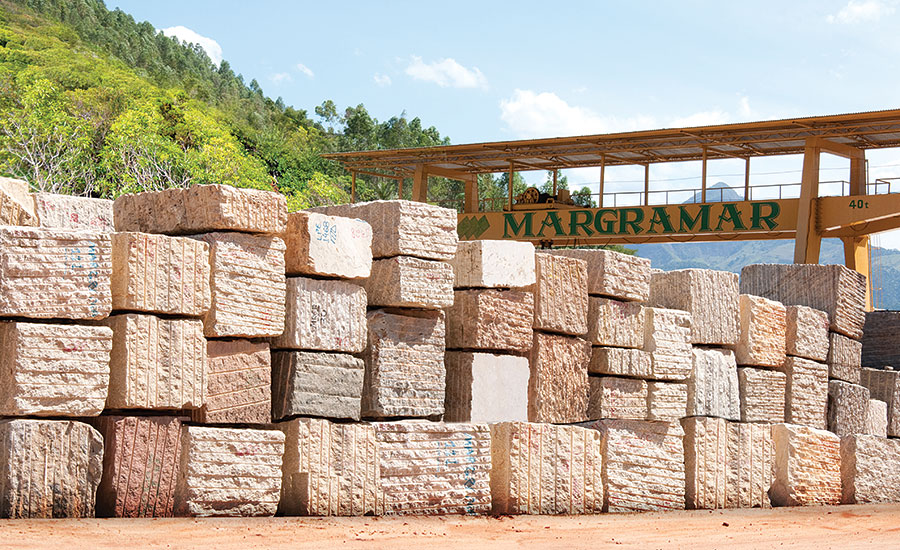Unveiling the Mysteries of Granite Quarrying: Where Toughness and Elegance Meet
The globe of granite quarrying is a realm where the raw stamina of nature converges with human artistry to develop frameworks that stand the examination of time with an air of sophistication. From the midsts of quarries to the meticulous polishing in workshops, the process of changing granite right into building marvels is a complex dance of practice and technology. As we peer into the midsts of this ancient craft, we begin to uncover the covert ins and outs that form the extremely significance of our built setting.
The Beginnings of Granite Quarrying
In the record of architectural history, the origins of granite quarrying are shrouded in a tapestry of old craftsmanship and geological wonders. Going back to old Egypt and Mesopotamia, the extraction of granite from quarries marked the beginning of a trip that would ultimately cause the development of some of the globe's most renowned structures.
Granite quarrying's roots can be mapped to the knowledgeable artisans who identified the rock's sturdiness and visual charm. Via a combination of primitive tools and large determination, these early quarry workers discovered granite blocks that would end up being the building blocks of people.
As human beings advanced, so did the methods of quarrying granite. The Romans, renowned for their engineering expertise, created advanced techniques for removing granite to build monuments, temples, and roadways that stood the test of time.
The tradition of these ancient quarrying techniques remains to form contemporary style, with granite remaining a symbol of toughness and beauty in building jobs around the world. (granite quarries in south africa)
Tools of the Quarrying Profession
The advancement of granite quarrying strategies from old people to contemporary times highlights the crucial function played by the devices of the quarrying sell shaping the sector's practices. In ancient times, quarrying devices were simple, usually consisting of chisels, hammers, and wedges made from materials like bronze or iron. These tools called for substantial manpower and time to remove granite blocks from quarries.

Additionally, the introduction of pneumatic tools and high-powered machinery has actually dramatically lowered the physical labor called for in quarrying operations, boosting employee safety and performance. As the quarrying sector proceeds to innovate, the tools of the trade remain at the center of driving development and forming the future of granite extraction.
Drawing Out Blocks of Granite
Utilizing precision machinery and progressed techniques, the removal of granite obstructs from quarries has actually come to be an innovative process in the modern quarrying market. The preliminary step includes identifying the place and dimension of the granite down payment to identify the most effective removal approach. When a suitable website is picked, the extraction process starts with the drilling of holes for the placement of nitroglycerins. Regulated blowing up techniques are then used to break apart the granite into manageable sections.

Sprucing Up and Finishing Methods
To achieve a perfect surface area on granite blocks, competent artisans utilize a series of careful polishing and completing methods. After the first removal and forming procedures, the granite obstructs go through a thorough polishing stage to improve their natural beauty and durability. One usual approach made use of in brightening granite is diamond abrasion, where industrial diamonds are utilized to grind and brighten the rock to a smooth surface. This procedure not only produces a glossy surface area however additionally makes sure uniformity in shade and structure throughout the granite block.
In enhancement to polishing, ending up strategies are applied to further refine the granite's appearance. By thoroughly picking and applying these brightening and completing techniques, artisans can transform raw granite blocks into charming pieces that showcase both strength and beauty.

Ecological Effect and Sustainability
With the growing emphasis on environmental consciousness in the industry, granite quarrying methods are increasingly inspected for their impact on all-natural sources and long-term sustainability. In addition, the transportation of granite from quarries to refining centers generates carbon discharges, better contributing to ecological destruction.
To reduce these impacts and guarantee sustainability in granite quarrying, sector stakeholders are embracing different procedures. Carrying out innovative technologies to lower power intake and water use, redeeming quarried land for environmental remediation, and advertising Clicking Here accountable sourcing techniques are some approaches being used. Additionally, certifications such as the Forest Stewardship Council (FSC) and the Management in Energy and Environmental Style (LEED) assistance customers identify eco pleasant granite items.
Verdict
In conclusion, granite quarrying is a process that calls for specialized tools and techniques to essence blocks of granite and polish them to a high degree of finish. While the ecological effect of quarrying can be considerable, efforts are being made to enhance sustainability techniques in the industry. In general, granite quarrying is a fragile balance in between taking advantage of the strength and sophistication of this natural stone while reducing its effect on the atmosphere.
Comments on “A Journey Through Granite Quarries in South Africa: Introduction Nature's Creativity”